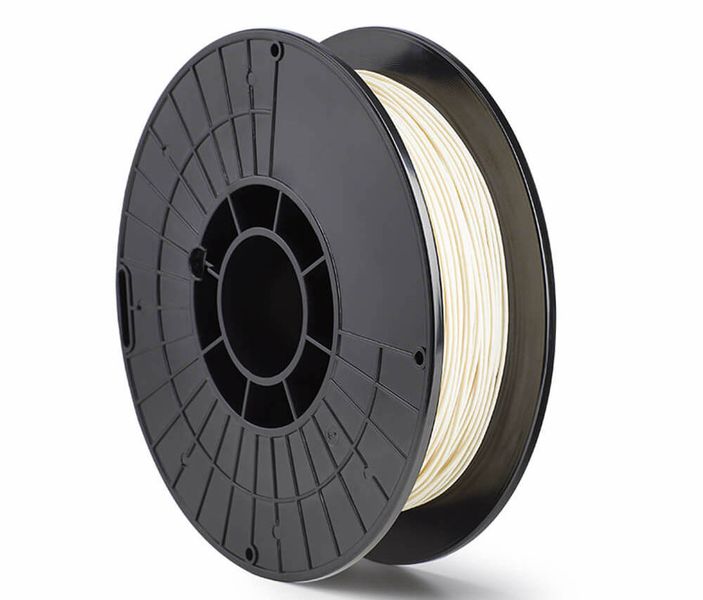
Infinite Material Solution announced a very unusual 3D printing material, Caverna PP.
The company is one of a few that seem to invent “off the board” materials that no one seemed to expect. Previously they had released AquaSys 180, a water-soluble support material designed for very high temperature work.
The new material, Caverna PP, is definitely off the board. Infinite Material Solution described it as “a water-soluble, co-continuous, microporous morphology.” When extruded and processed it results in a foam-like structure with many pores.
We’ve seen something similar like this before, where colorFabb introduced their VarioShore filament, but Caverna seems to be a bit different.
Whereas the Varioshore seems to generate bubbles during 3D printing, Caverna PP requires a bit of post-processing. Completed Caverna PP prints must undergo a water bath, which selectively dissolves some material in the print, leaving the porous structure.
Infinite Material Solution said the resulting objects are “soft and porous”, and that they have “incredible moisture vapor transmission.” In other words, they are truly sponge-worthy.
Given that the company’s previous products include water soluble materials, it is highly likely the new Caverna is a blend of the water soluble compounds with a structural material. By getting the coarseness of the mix just right, they could indeed produce foam structures after a water treatment.
But what is that structural material? In the case of Caverna PP, we have a clue in the product’s name: its polypropylene, of course. The company said they intend on producing a range of Caverna products, so in the future we might see products like:
- Caverna ABS
- Caverna PLA
- Caverna PETG
- Caverna PA
Since the Caverna 3D prints are soft, I’m wondering whether they would attempt to produce a TPU or elastomer version of Caverna, where you’d end up with a very soft and stretchable 3D print. That’s a material I don’t think has been produced anywhere yet, and I’m puzzled about potential applications for it.
Infinite Material Solutions has some ideas for potential applications, explaining:
“The company expects this new material to get additive manufacturers dreaming up new applications in fields such as filtration, separators, footwear, and personal protective equipment. One area of particular interest is the potential to create porous tooling for the production of vacuum formed parts. Caverna PP’s co-continuous distribution of tiny pores (1–4µ) could allow for consistent airflow, eliminating the need to drill holes, and maximizing material distribution.”
The porous tooling application is quite interesting, and could become a major use case for the new material, as it could simplify the manufacturing workflow.
Along with the softness and moisture absorption properties, Caverna 3D prints certainly would have another highly desired feature: lightweight.
The foam is composed of tiny interior voids that clearly subtract from the weight of the object. Infinite Material Solution doesn’t say, but it’s likely a Caverna 3D print would be quite a bit less dense than a typical 3D print in the same structural material.
That could be advantageous for weight-challenged applications, such as aerospace, drones or similar. However, it’s not clear how the porosity affects the mechanical strength of the Caverna parts, but certainly tests will be done.
Caverna PP is a bit pricey. Currently it’s sold on Infinite Material Solution’s site at US$110 per 500g spool. It’s likely other Caverna material options will be priced in a similar range, although they have not yet been announced.
Via Infinite Material Solutions
